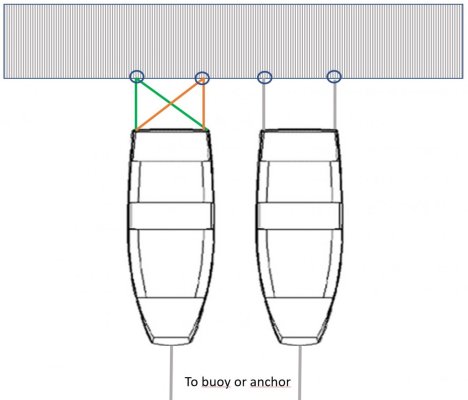You ask if anyone has tested this to prove it right or wrong. Your misconception of this is very (very) common. I often demonstrate this in rope classes to correct the misconception.
In the example, pull on one end of a rope with 20# of effort. Result is that you can not do it. There has to be an equal resistance on the other end. Is it a pull at both ends? Or a pull at one end and resistance at the other? Think of it as resistance and it will be easier to wrap your mind around it. Doesn’t matter if the rope is straight, or redirected around a piling, or pulley. At no point in that rope does the strain on the rope exceed the pull on one end (because the other end is equal and opposite, just resisting the pull.)
If the rope is put around something large in diameter, like a piling, now you introduce a reduction of strain on the rope as shown in PSNeeld’s graph.
No! The force DOES NOT multiply behind the piling.
“A” has up to four times the strength of “B”. Up to, depending on what angle the load pulls off the eye. If the load line comes straight off the piling without being deflected more than a few degrees, then you have one line strength. If it deflect 180 degrees around the eye, you only have 50% line strength because you are putting effectively 2 times the load into the line that the eye is spliced into. Line end with the eye in it would break. (Not allowing for friction.)


 :lol:
:lol: